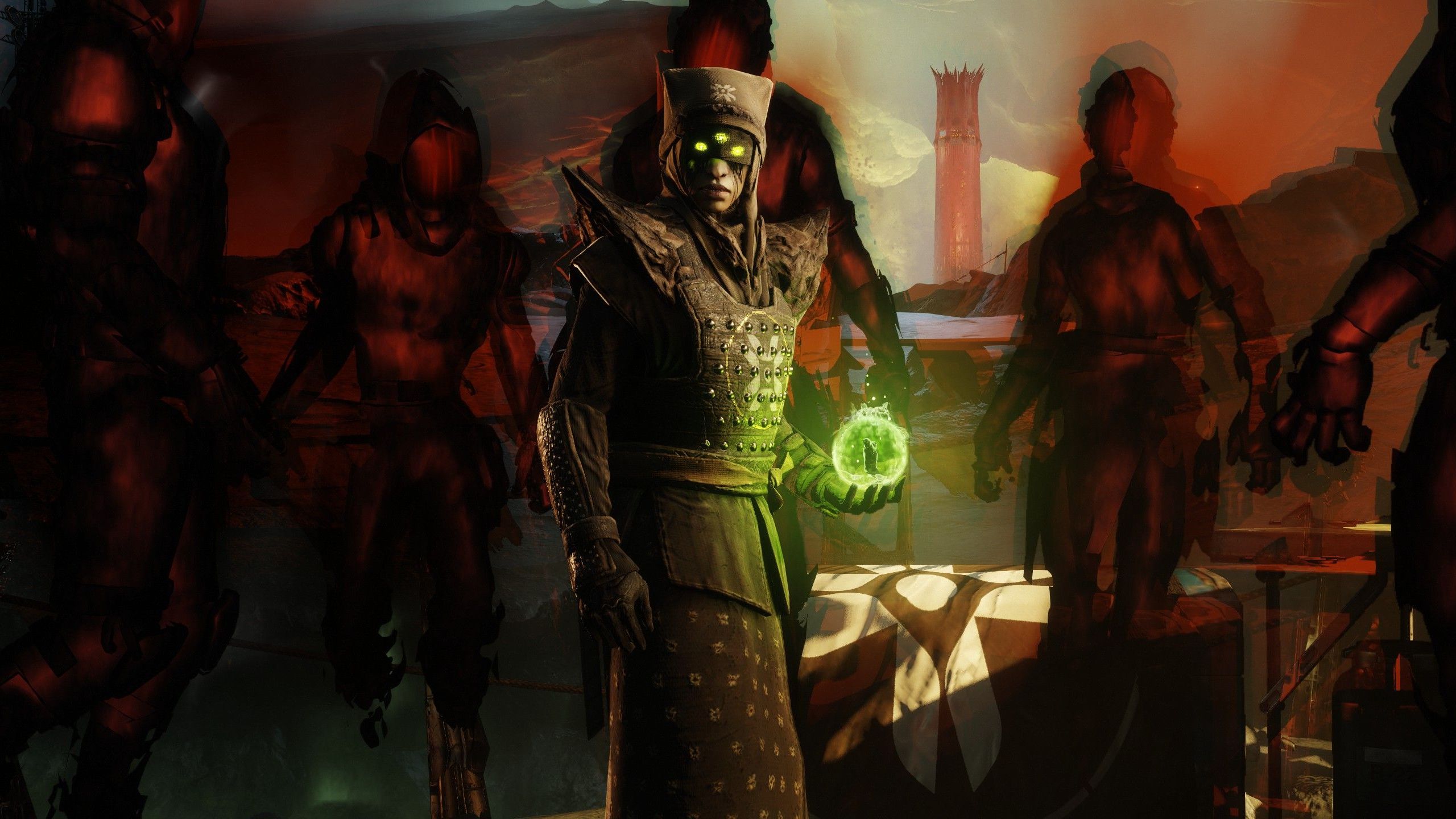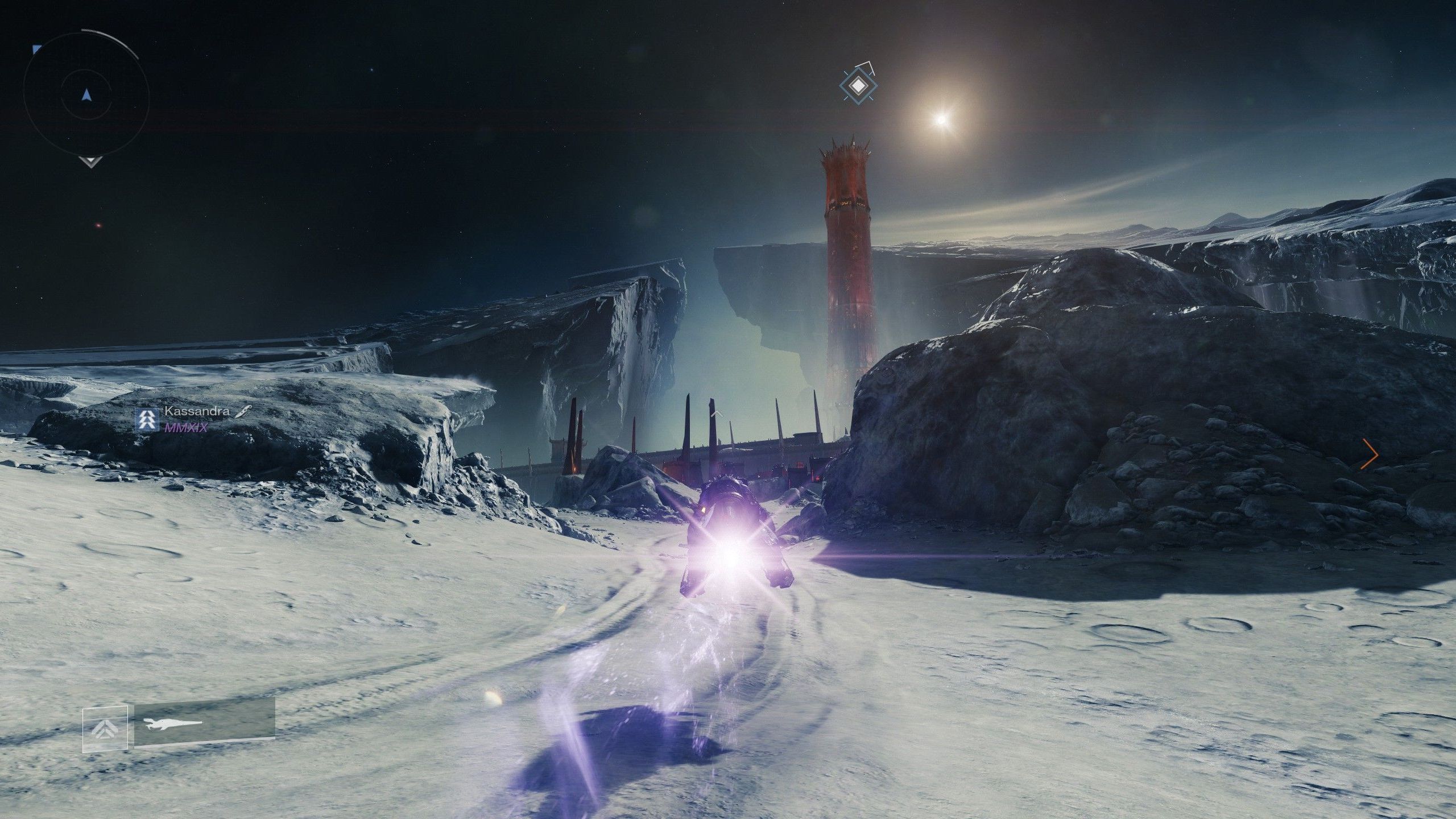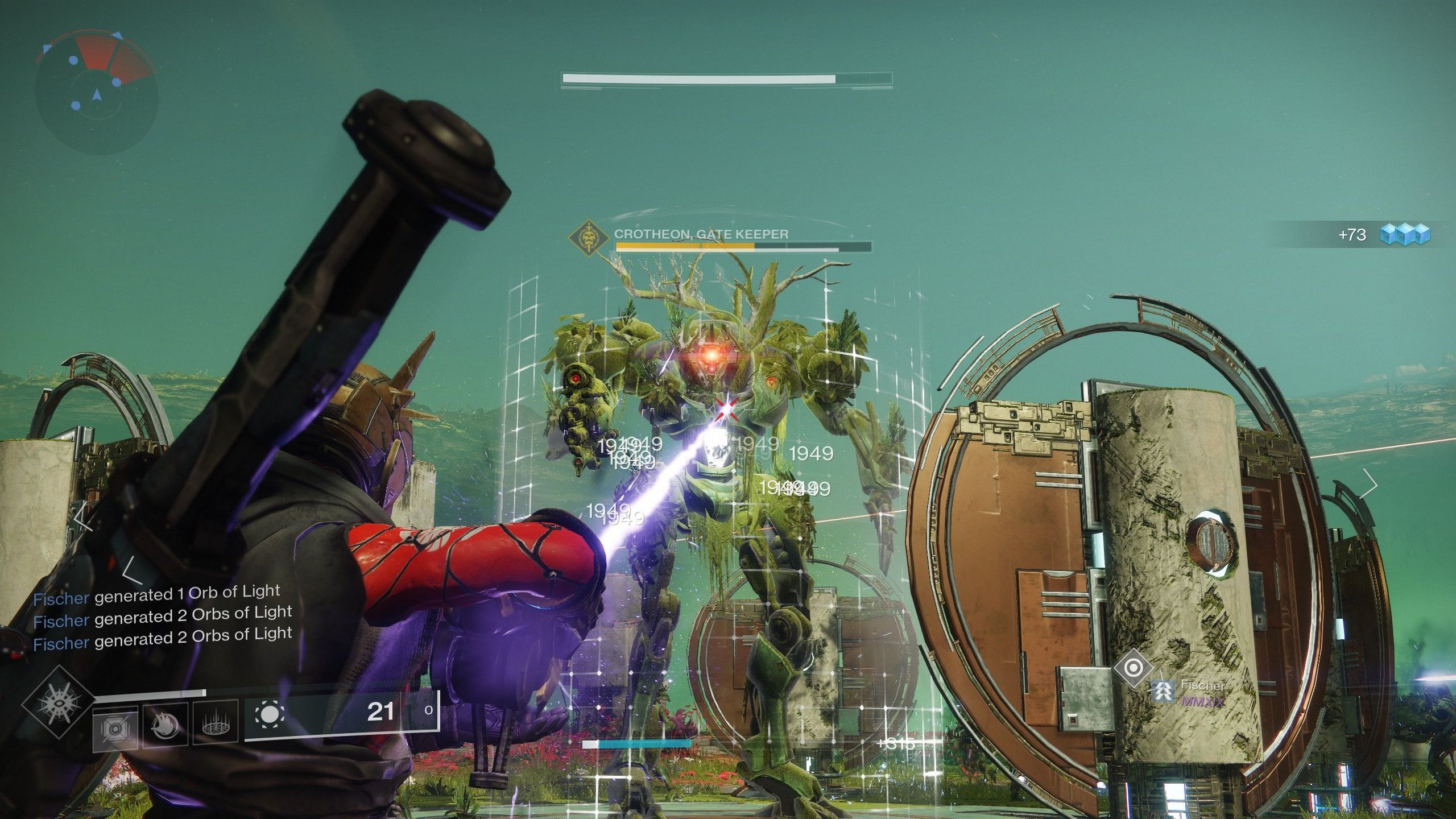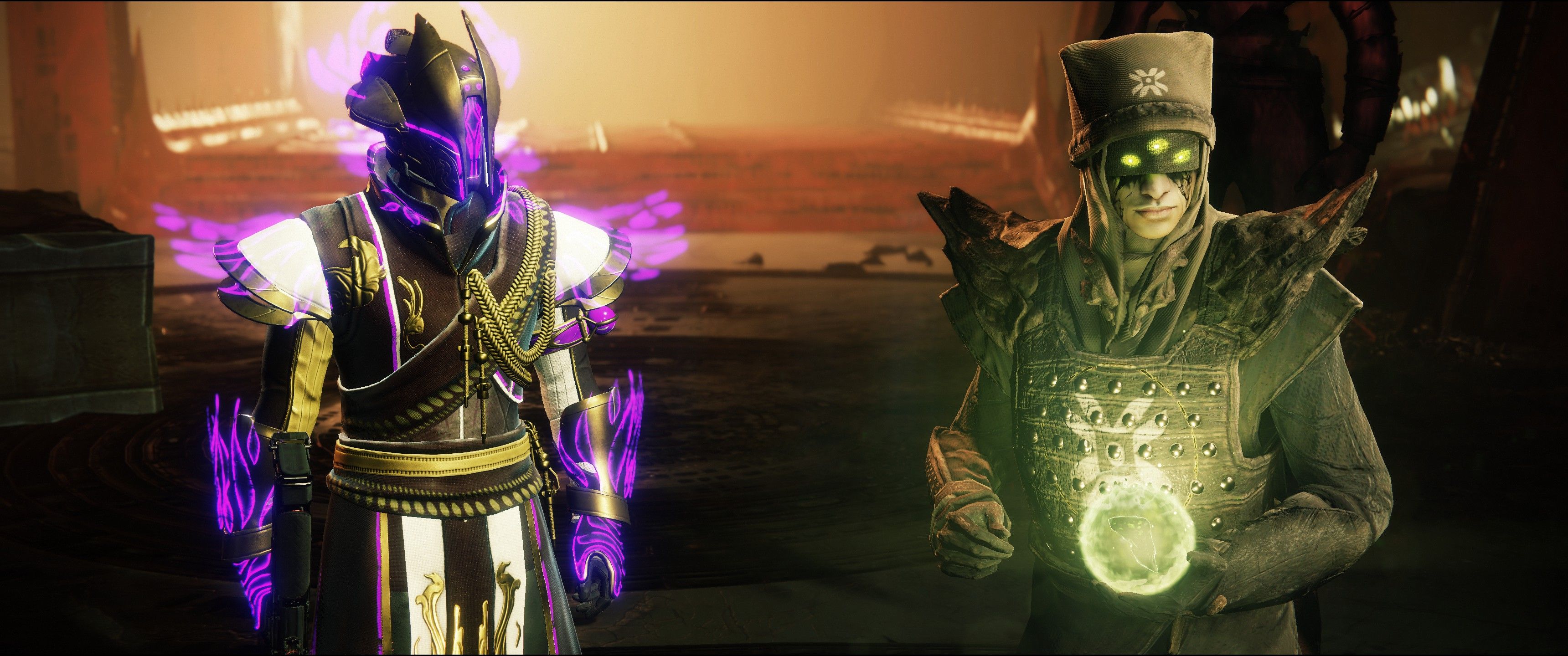Our Verdict
Not the best, biggest or neatest expansion in the series' history, Shadowkeep nonetheless sets a solid foundation for what's to come.
PC Gamer's got your back
What is it? A spooky third expansion for loot-shooter Destiny 2.
Expect to pay $35/£30
Developer Bungie
Publisher Bungie
Reviewed on GeForce GTX 1070, 16GB RAM, i5-6600k
Multiplayer MMO-ish
Website Official site
It was a mistake to refer to Destiny 2 and its ilk as 'games-as-a-service'. 'Service' implies consistency and a smooth user experience. 'Service' tries to hide the limitations of the team delivering it. Destiny 2 is something else. Destiny 2 is games-as-an-infrastructure—a subway system that gradually builds into something bigger and more sprawling; that needs to be constantly maintained; that will sometimes keep you waiting because such projects are big and complicated and the people running them can't do everything at once.
With Shadowkeep, Bungie is redrawing the map. The expansion adds a revitalised tourist destination—the Moon, returning from the first Destiny with a handful of new attractions and a fresh coat of paint—but also spearheads a more fundamental shift in purpose. A series of small tweaks and changes that add up to something that feels at once far-reaching and, paradoxically, not as dramatic as it first seems.
Players return to the Moon in search of series regular Eris Morn, the Destiny character voted most likely to keep a LiveJournal. Shadowkeep's campaign manages to highlight both the best and worst of Bungie's storytelling. The specific objectives are tiresomely monologued by Eris before you head out; the mystical technobabble ensuring I rarely ever know what I'm actually doing. The broad strokes are that you need to forge a new, special armour set, but the delivery is rendered obtuse thanks to the density of arcane Hive rituals and mystical macguffins.

And yet! On a wider level it's a triumph, thanks to an overarching threat that feels grand in both its menace and in the way Bungie has seeded it throughout the last two years of the game. As someone who's read my fair share of Destiny lore collectibles, coming face to face with the thing that hides beneath the Moon felt dramatic and shocking. Oh shit, I have to deal with one of those? I felt unprepared, which speaks to how successfully Bungie has teased the Destiny universe's larger antagonist.
Shadowkeep works in part because of the reason Destiny always works—it feels good to shoot the guns
As a collection of missions, Shadowkeep's campaign is largely business as usual. You'll fight your way to an arena and kill a big ogre. You'll fight your way to an arena and kill a big Captain. You'll fight your way to an arena and kill a big Wizard and then run away very fast. There isn't the same thematic playfulness as, say, Forsaken's campaign, which used the skillset of each Baron as the basis for how you'd beat them. Instead, Shadowkeep works in part because of the reason Destiny always works—it feels good to shoot the guns—but also because, as an environment, the Moon is dripping with atmosphere and nostalgia.
The Moon has always been one of Destiny's most evocative locations, but the new areas in Shadowkeep—the Scarlet Keep in particular—are astonishing in their beauty. The red tower looks almost like a painting, looming dark and ominous in the distance. As for the returning parts of the map, Bungie deftly avoids the disappointment that can come from retreading old ground. It helps that this is the Moon's first appearance on PC, but—even for people like me, who spent hours farming Helium Filaments in the first game—Bungie has shown enough restraint when it comes to resurrecting old content that here the return feels novel and exciting.
I get a kick out of revisiting destinations like the Traitor’s Ketch, where Taniks once challenged players in the ways of old, or from navigating the tunnels under the surface using nothing but memory and guesswork. Most of Shadowkeep's guns are tied to quests that require tracking down trinkets throughout the world. While many will likely turn to Google, I've enjoyed getting lost underground, refamiliarising myself with the strange sights of the Hive's stronghold. It helps that, even for the returning locations, enough has been subtly changed that it feels like time has passed—a rare thing in a game that's largely about doing the same things over and over.

The campaign's ending may be abrupt, but, as always, the expansion's story is more of a tease of things to come—some of it through the next year of seasonal releases, the rest likely further out still. In the meantime, the familiar and steady rhythm of Destiny 2 resumes after players have hit the relatively easy-to-reach soft power cap of 900. The slower journey to the hard cap of 950 may have been remixed, but the notes are largely the same—relying on the weekly drops of powerful gear from three-player Strike missions, Crucible PvP matches, the still-brilliant competitive PvE of Gambit, and the new raid, which challenges players with a series of puzzle-like encounters among the vibrant, Vex-infested greenery of the Black Garden.
There's a renewed focus on bounties now, with each vendor offering a powerful reward if you complete a set number within a week. Thanks to the XP awards now granted by bounties, which award progress along a season pass full of goodies as well as powering up the new seasonal artefact, the steady tick of treats keeps things moving at a nice pace. That said, I'd love a central bounty board that collected them all up for easy access. Nothing delays a fireteam like having to bounce between vendors hoovering up bounties for every activity that might be on the cards for that evening.
As for specifics additions and changes, yes, there's a new Nightfall variant—The Ordeal, which has curated modifiers that increase in number as you up the difficulty. Yes, the Crucible playlists have been retooled, giving players more control over what mode they play, (and letting you earn Glory score without ever having to suffer through a round of Countdown). And yes, there are new Strikes and a couple of Crucible maps from the first game that make their PC debut. But there's also a lot of repeating the same things that we've been doing for over a year. You will run the Pyramidion strike and earn a Ten Paces. You will play a Control match on Vostok and be rewarded with a Does Not Compute.
The lack of new world or vendor loot isn't a surprise—if Destiny 2 game director Luke Smith's essay on the state of the game pre-Shadowkeep had a single throughline, it was the limitations of what a development team can reasonably produce. Nevertheless, I was surprised how much being awarded the same old guns hurt my excitement for the year ahead. Ah shit, here we go again: another year of dismantling Go Figure.

That isn't to say there aren't new guns. Both Shadowkeep and the Vex Offensive activity that headlines the Season of the Undying (which runs in parallel to the expansion's release), each have their own new weapons. If anything, though, they're a too generously awarded. Ever since seasons were separated from DLC with Season of the Forge and the Black Armoury, each has had a different approach to awarding weapons. Last season's Menagerie felt like it hit the sweet spot: letting players decide what weapons or armour to chase. The Vex Offensive approach appears to be all guns, all the time. I've played maybe eight rounds of the event to completion and have somehow amassed nine scout rifles. It feels like overkill.
The frequency of new drops, and the lack of a vendor refresh, hides a deeper problem: there's less incentive than ever farm new guns. I'll pick one of the new Undying weapons at random: Loud Lullaby. It's an aggressive frame kinetic hand cannon, and thus up against the tried-and-true Duke Mk. 44 of which, if you've played for any length of time, you'll have dismantled hundreds of times.
The frequency of new drops, and the lack of a vendor refresh, hides a deeper problem.
I have good aggressive hand cannons already, although it's an archetype I rarely use. More broadly, I have good versions of every type of hand cannon. My desire to chase the specific set of perks that would make the Loud Lullaby distinct among its peers—subsistence and rampage, for instance—is low. Even discounting exotics, do I need a new hand cannon when I've got a curated Kindled Orchid? Do I need a new submachine gun when I've got The Recluse? Preference is still a factor: I enjoy the feel of the auto rifle Pluperfect enough that it's earned a spot in my loadout. But—unless new loot is paired with a host of interesting new perks—farming for the best version of your favourite gun just doesn't feel as vital.
On the other side of the loot pool, the chase for new armour sets does at least have more obvious purpose. Shadowkeep brings new armour stats and a new, ostensibly more flexible mod system. Instead of consumables, mods are now unlocks—free to be switched in and out into any armour piece of the same elemental affinity. Any armour you collected before Shadowkeep will remain tied to the old mod system, but will also—in my experience, at least—have been assigned some woeful stat rolls as a heavy-handed incentive to switch.

Your mileage will vary with the new system. Being able to easily experiment with different mods is a change for the better, but the elemental restrictions feel rooted in old-school MMO design in a way that will likely be at odds with how some play the game. Personally I like a little friction when it comes to theorycrafting builds, although the foundations of Shadowkeep's armour system aren't as solid as I'd like. The biggest issue is that, if I'm using a solar helmet, for instance, I can only see the solar mods. The system desperately needs a Collections tab that lets me see both the mods I've earned and where to unlock the ones I haven't. The theorycrafting potential is interesting, but that only works if you can easily see the possibility space.
For this reason the seasonal artifact is a much stronger addition. With it, you can unlock a selection of mods that will only be available throughout the Season of the Undying. As someone who remembers Destiny more as a series of metas—the year of being killed by Graviton Lance, the year of being killed by Luna's Howl, the hilarious weekend of being killed by Prometheus Lens—I'm excited by the idea of formalising it. That said, this season's inclusion of an enhanced submachine gun loader perhaps wasn't the most interesting way to shake things up given The Recluse's continued dominance in PvE.
Where Shadowkeep was billed as a bold new template for the third year, the reality is messier. Nowhere is this more clear than for 'New Light', the new user experience that puts the emphasis on repeatable activities and playing with friends. It's great in theory: certainly the amount of stuff you get for the newly free-to-play base game is incredibly generous. But it also does a bad job of onboarding new players. After a short introductory mission, you arrive at the Tower only to be inundated with quests. It's confusing and unhelpful, to the point where I've had a couple of friends who are trying out the game ask me how you even find the campaigns. For reference, they're with the shipbuilder. I don't know why either.
To be clear, Destiny 2 is still an engaging shooter that—when you step back and take stock of all it has to offer—is absolutely packed full of stuff to do. Shadowkeep is both an entertaining assortment of new activities and a solid base from which the game at large can build and improve. But Shadowkeep also doesn't feel like Destiny 2's final form, and there's a real sense that there's still much left to be tweaked and tightened.
The subway is being refurbished slowly, one station at a time. That doesn't stop me from enjoying the ride.
Not the best, biggest or neatest expansion in the series' history, Shadowkeep nonetheless sets a solid foundation for what's to come.

Phil has been writing for PC Gamer for nearly a decade, starting out as a freelance writer covering everything from free games to MMOs. He eventually joined full-time as a news writer, before moving to the magazine to review immersive sims, RPGs and Hitman games. Now he leads PC Gamer's UK team, but still sometimes finds the time to write about his ongoing obsessions with Destiny 2, GTA Online and Apex Legends. When he's not levelling up battle passes, he's checking out the latest tactics game or dipping back into Guild Wars 2. He's largely responsible for the whole Tub Geralt thing, but still isn't sorry.


